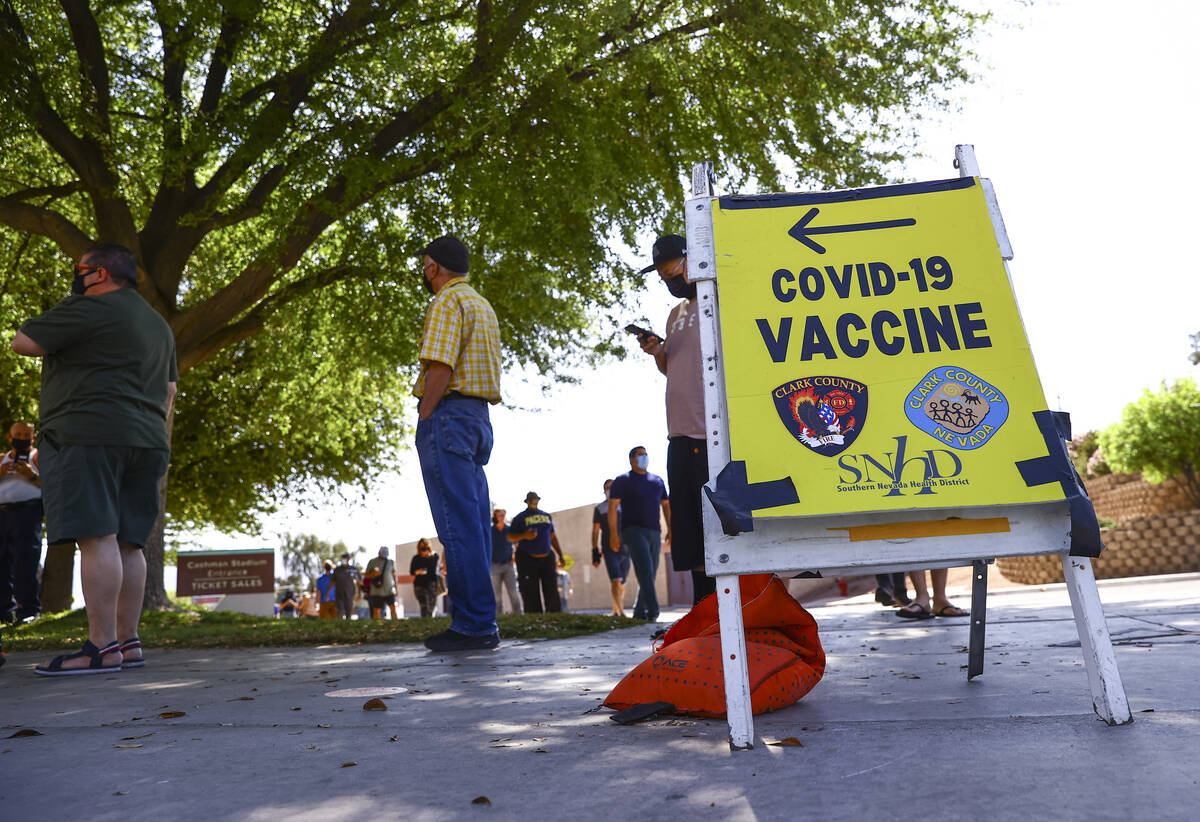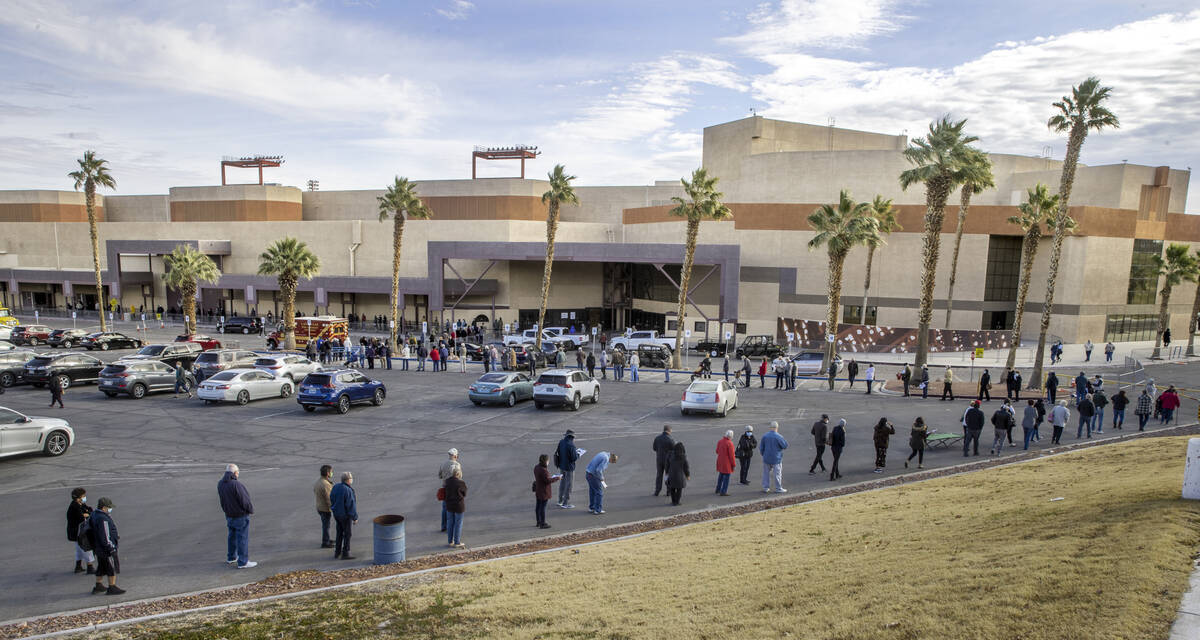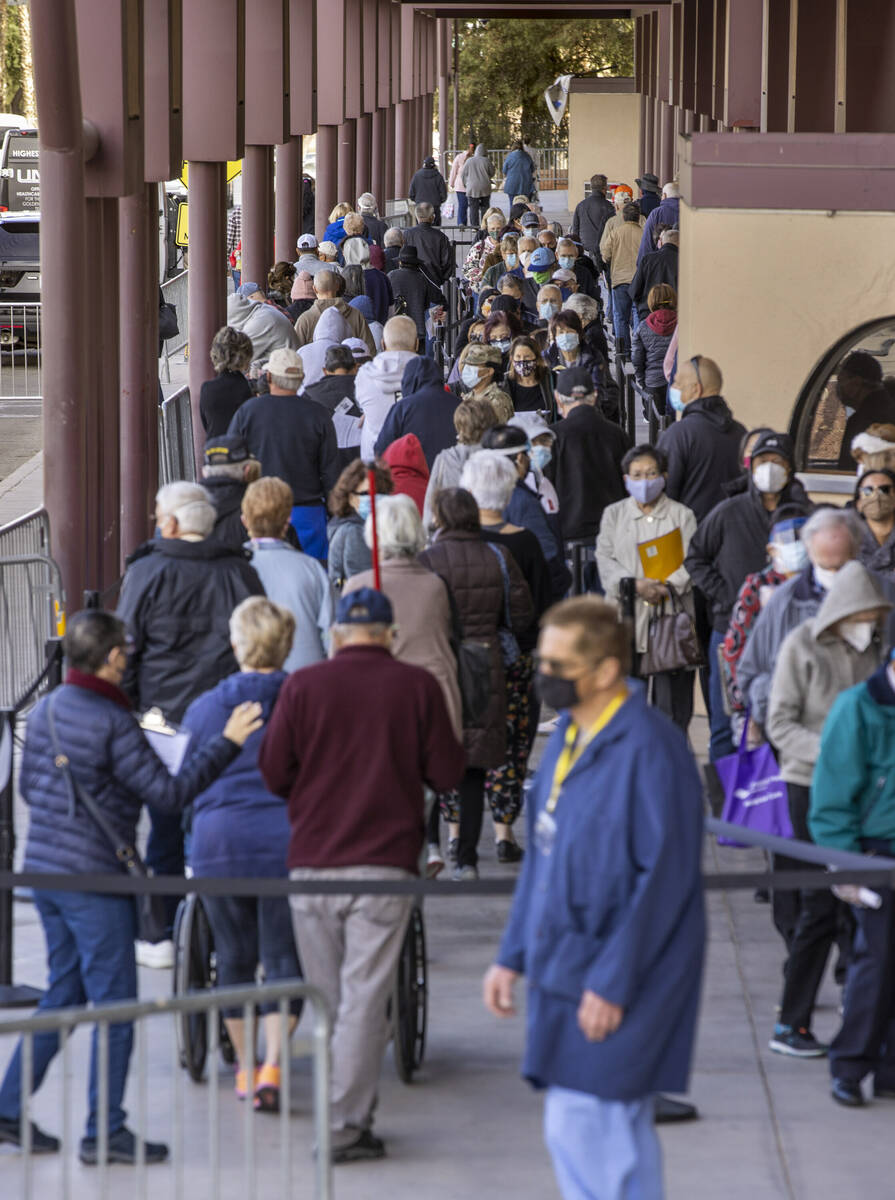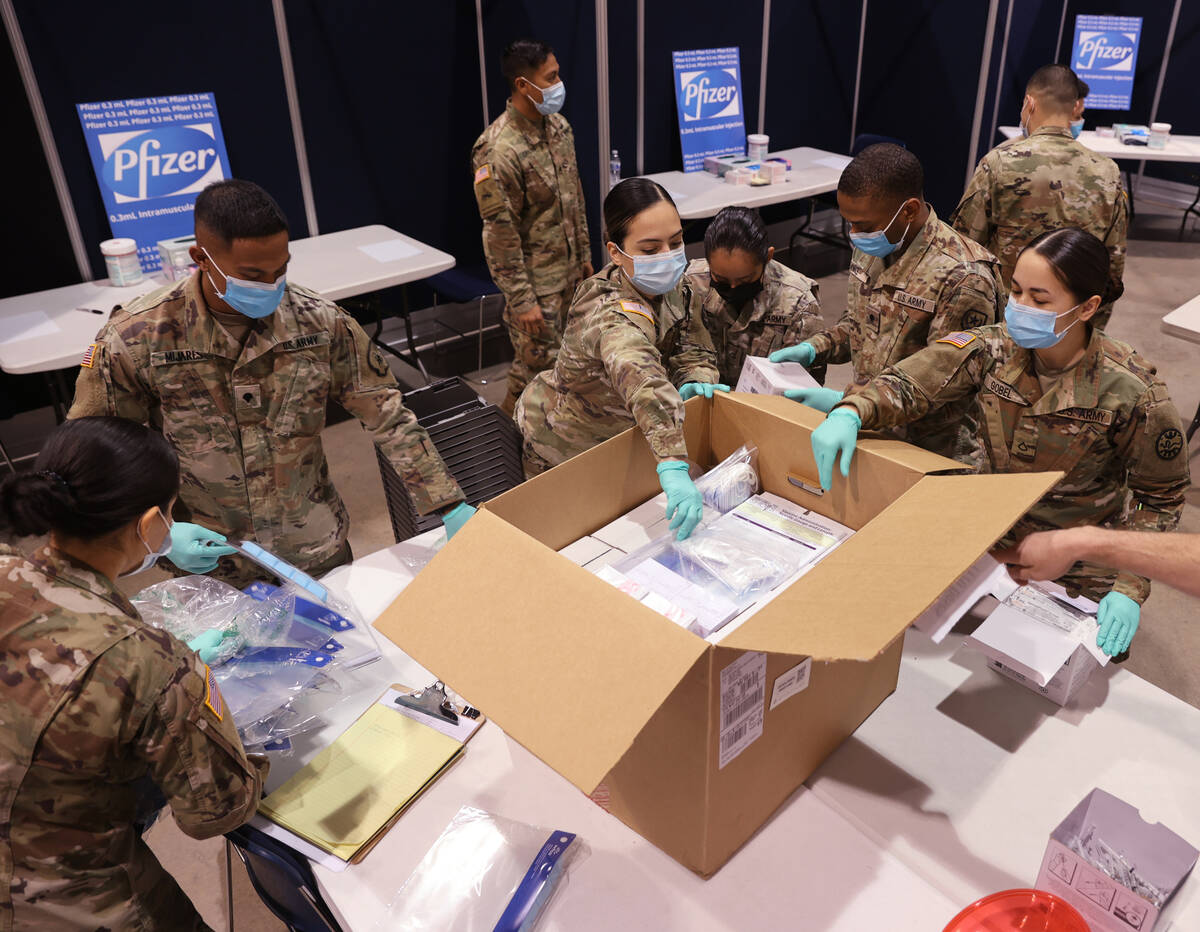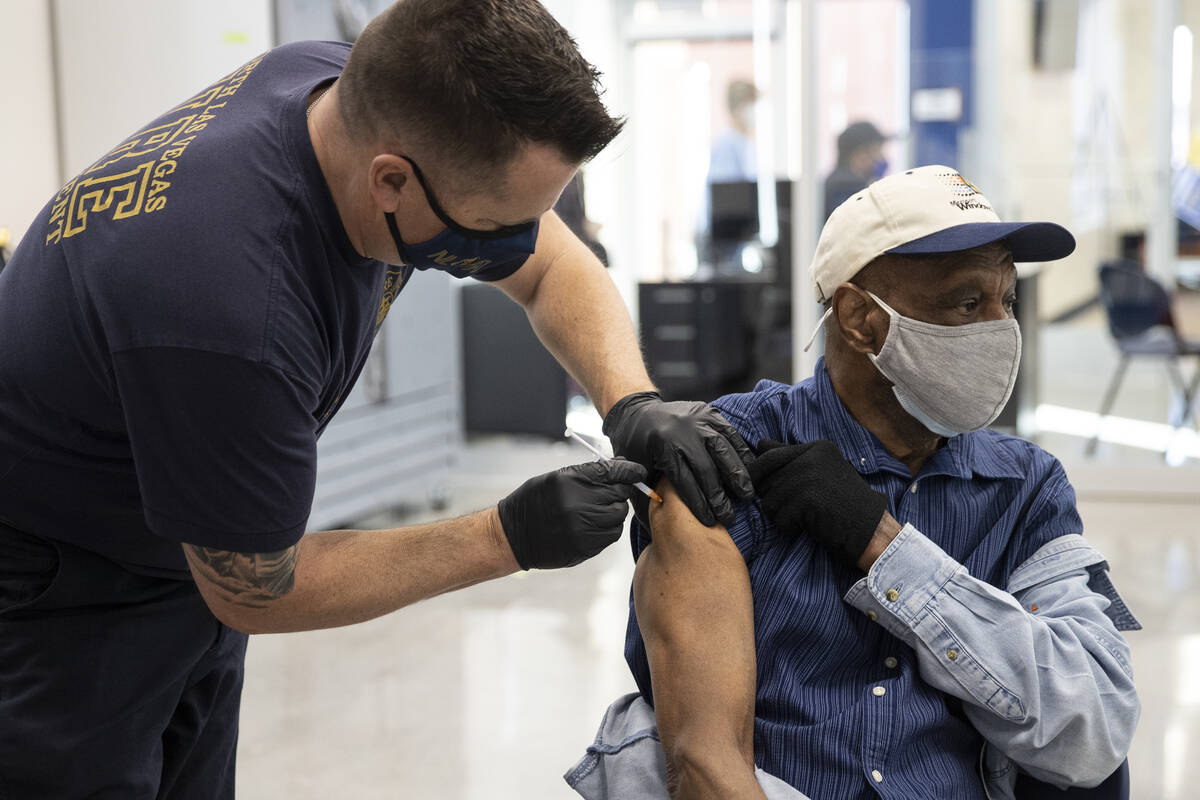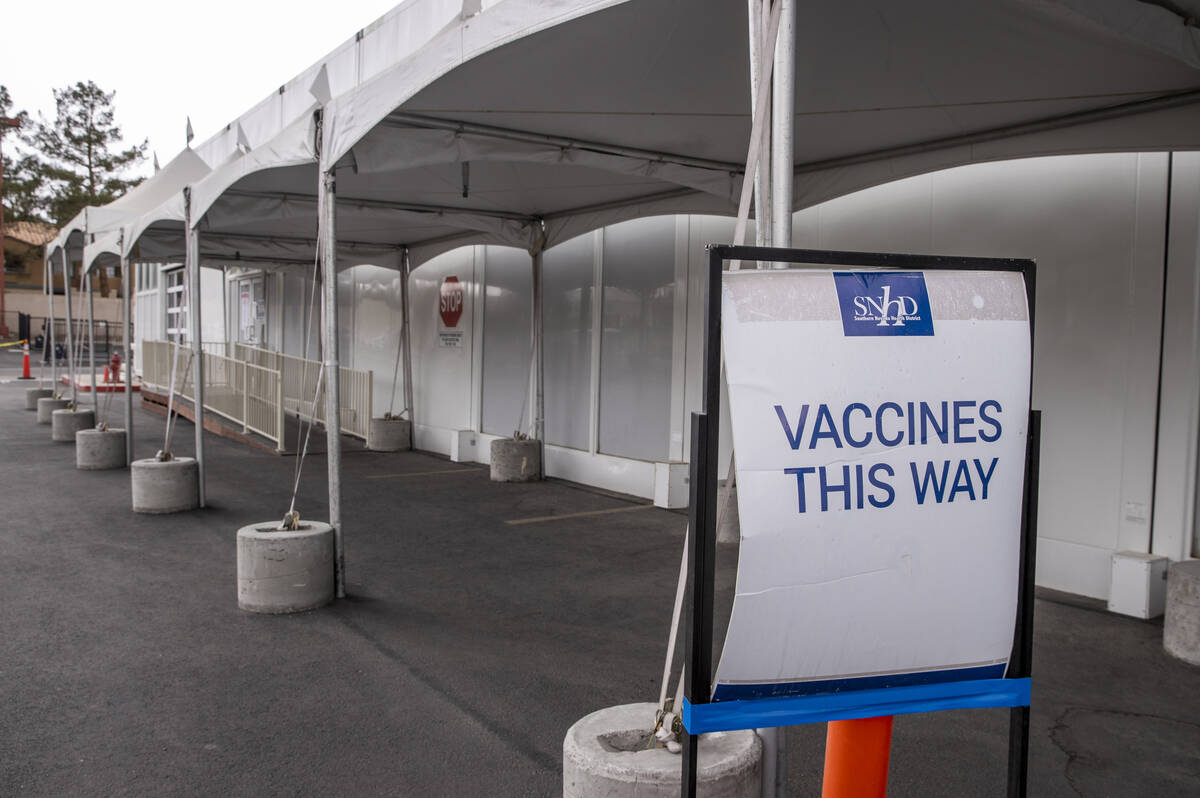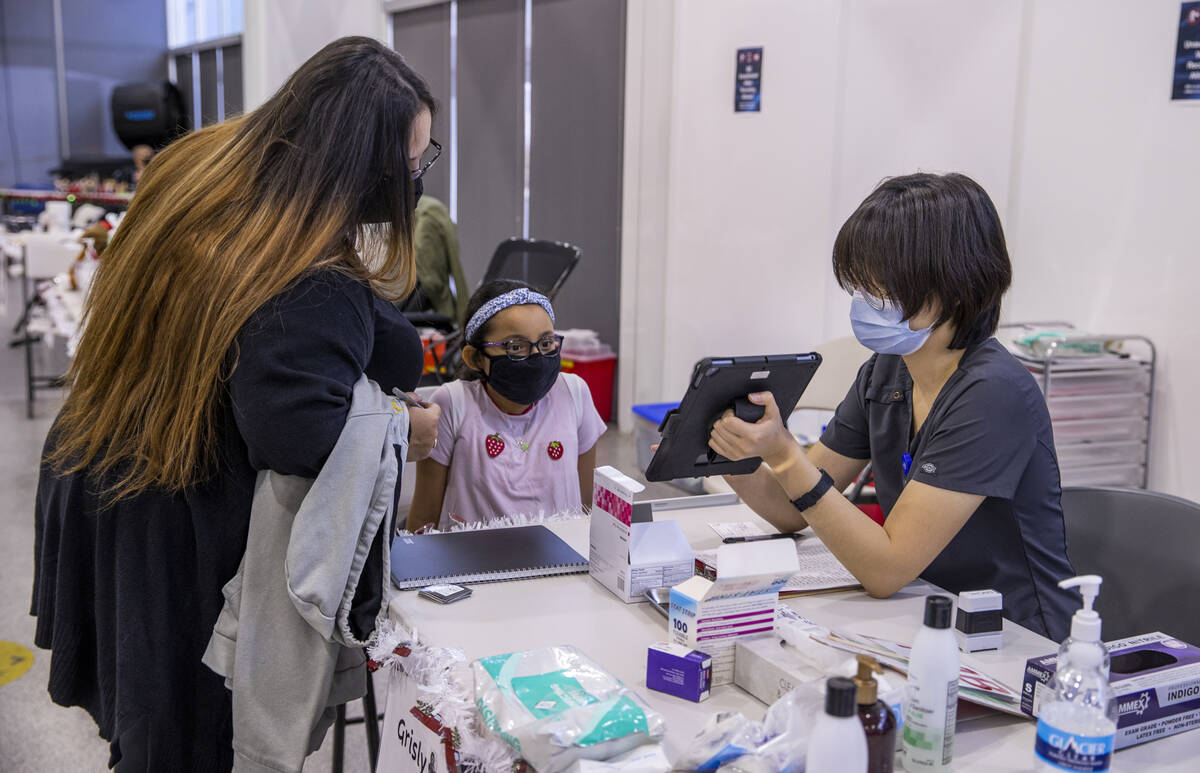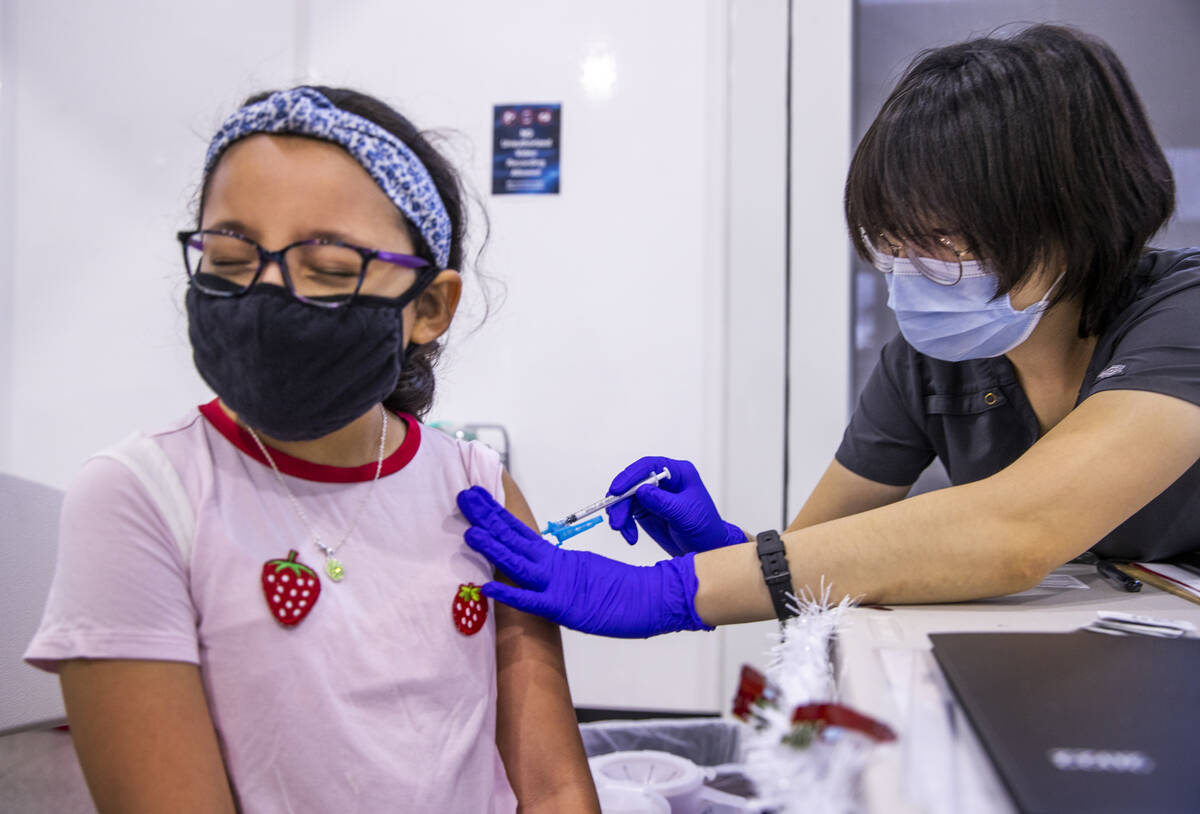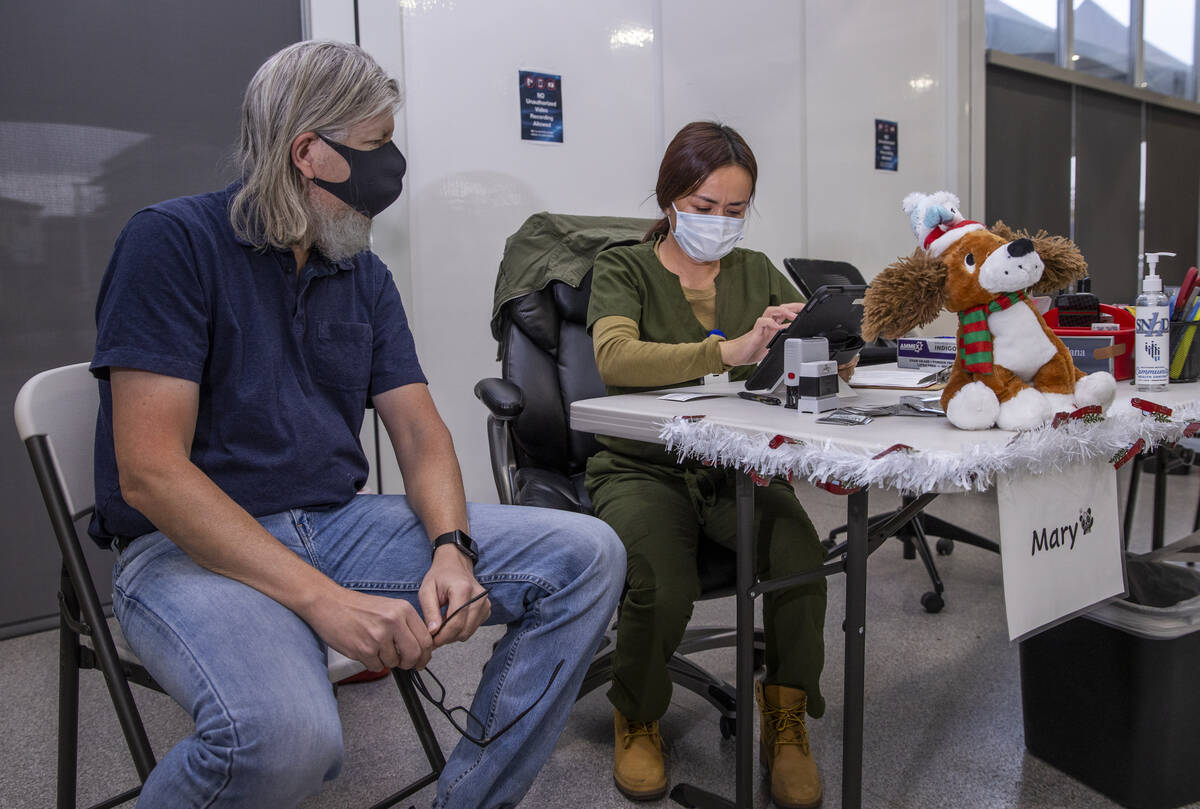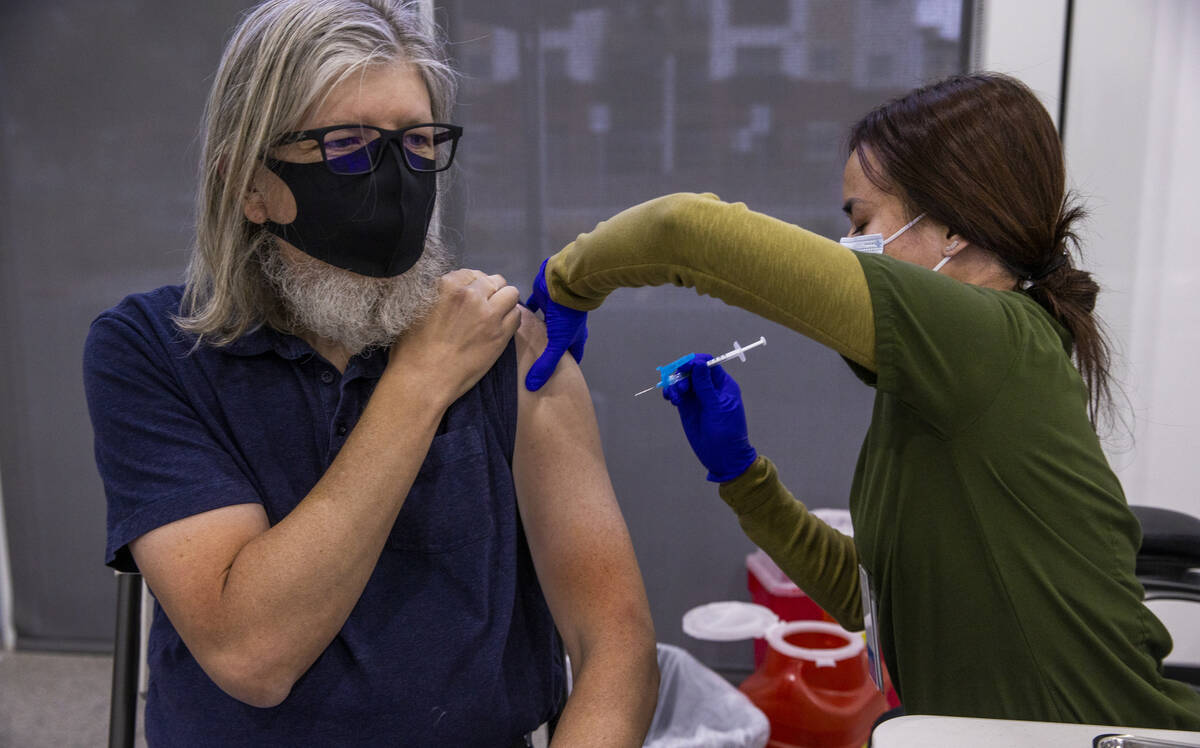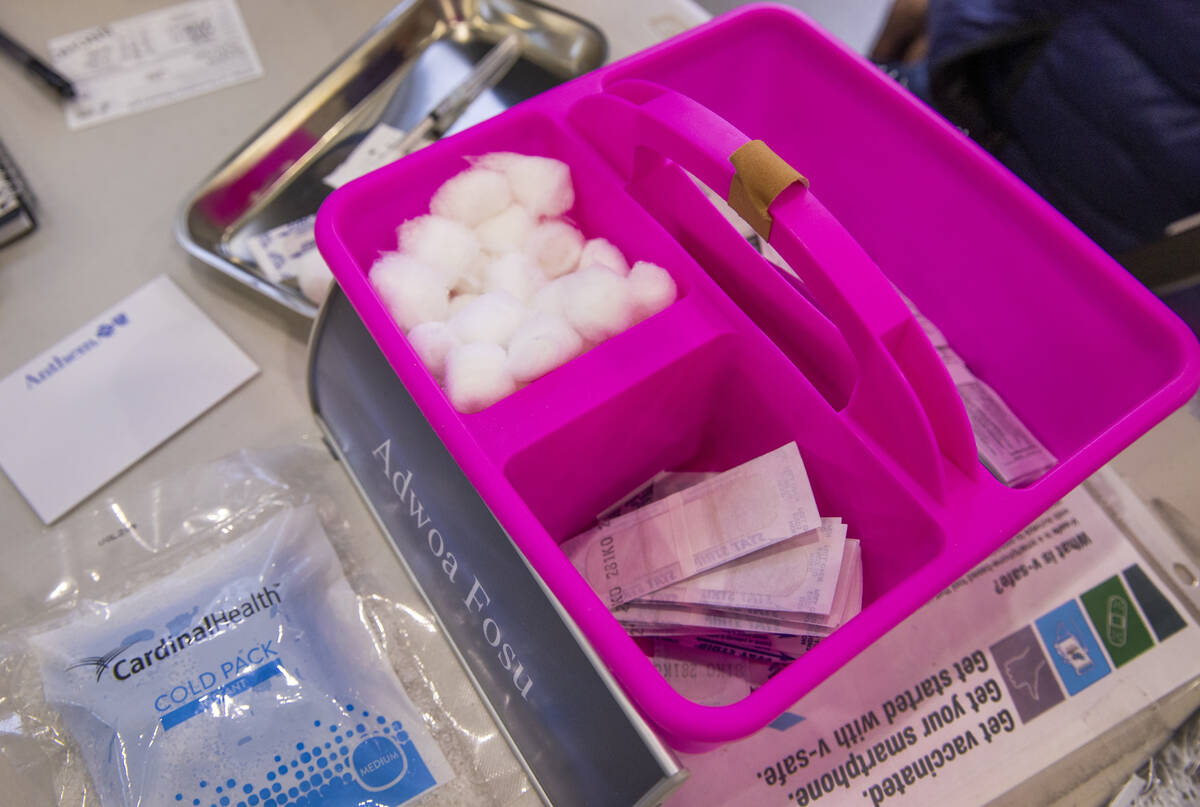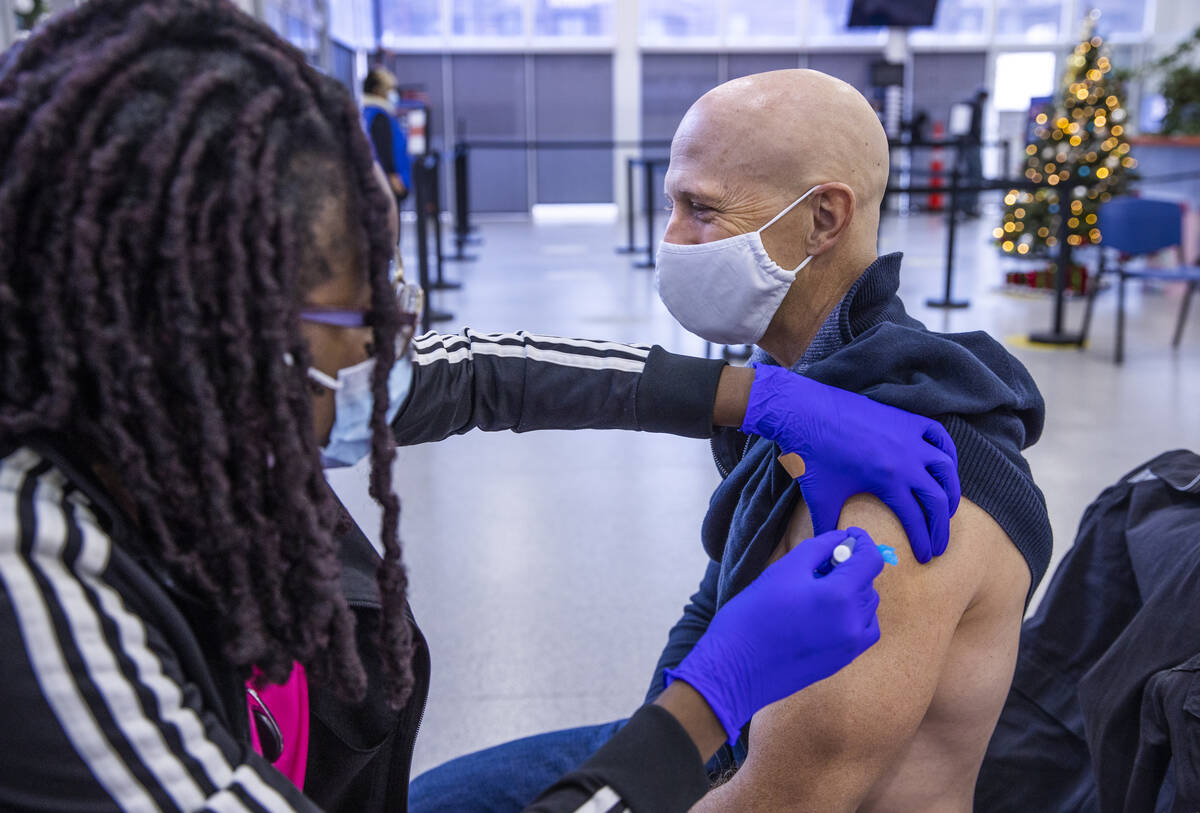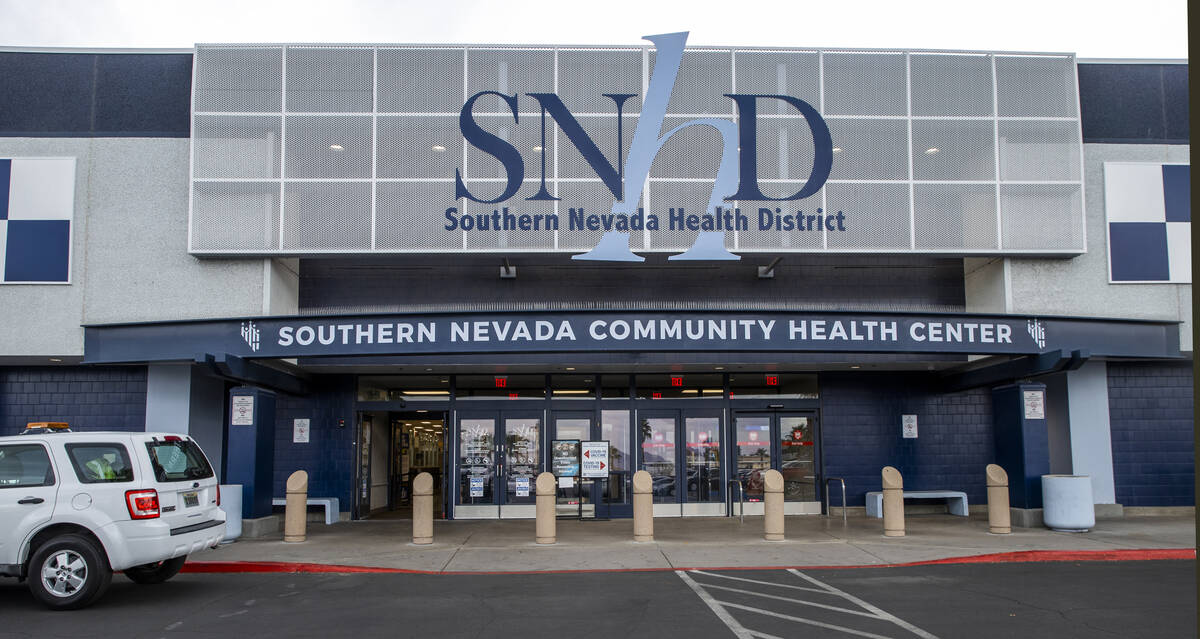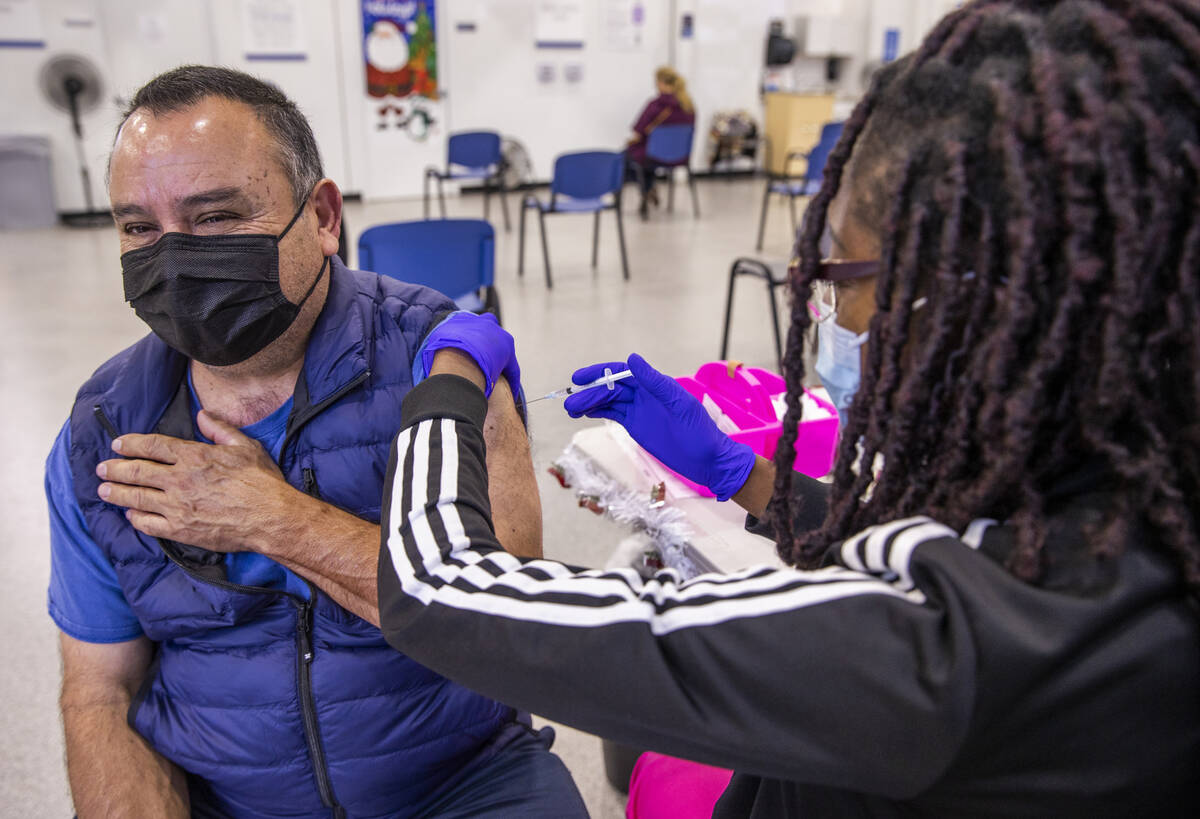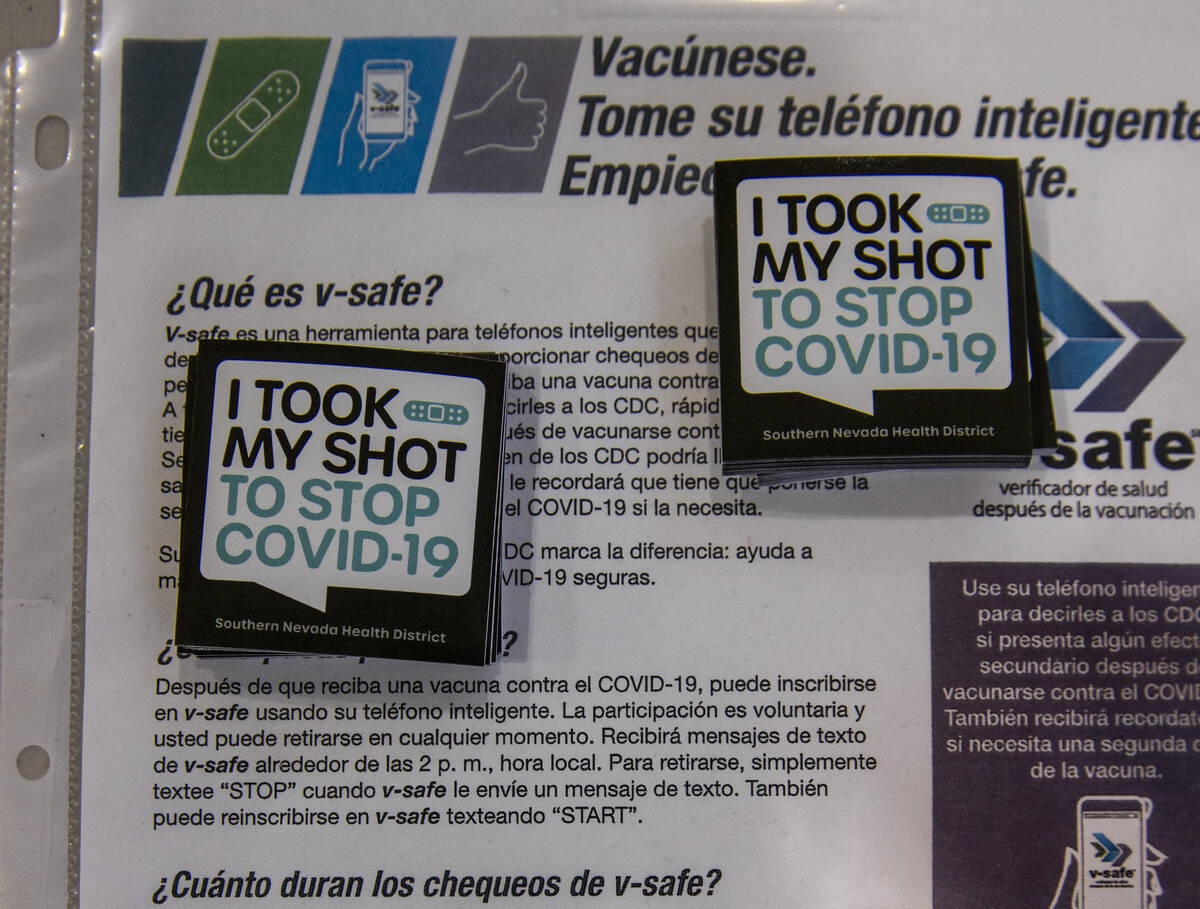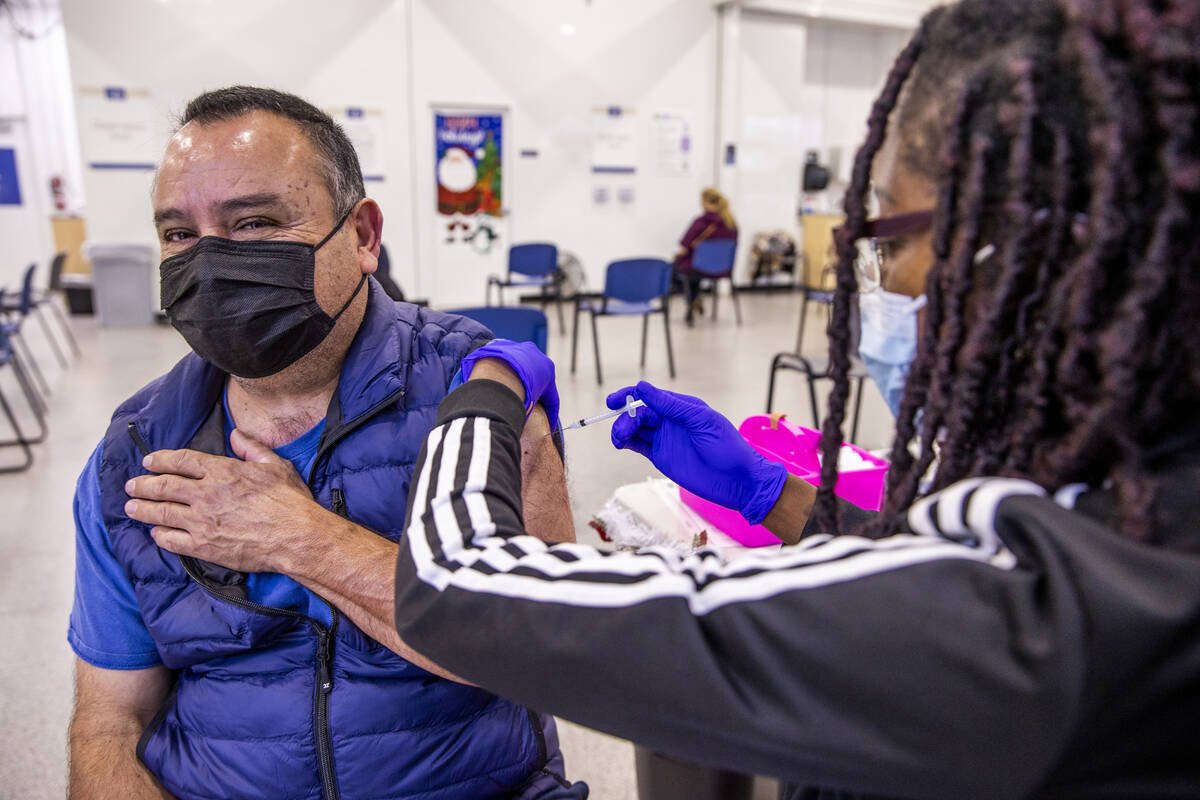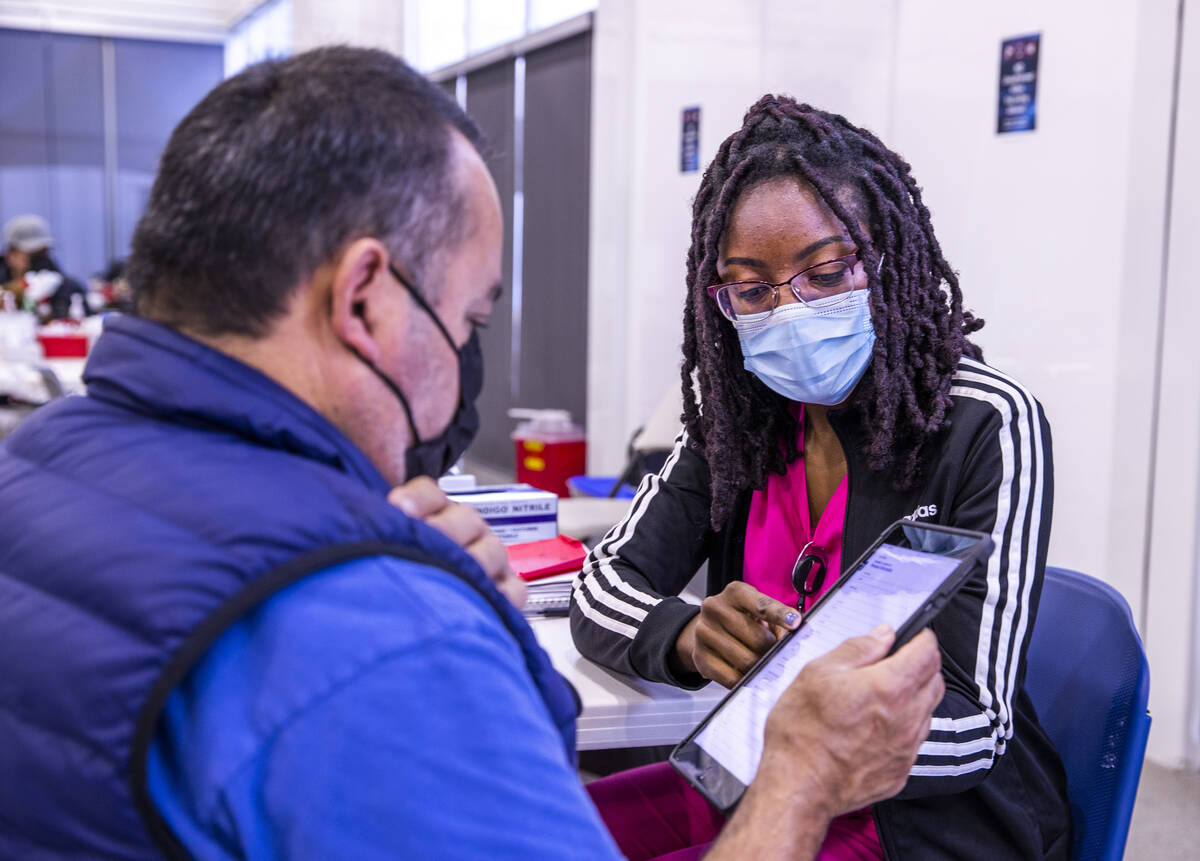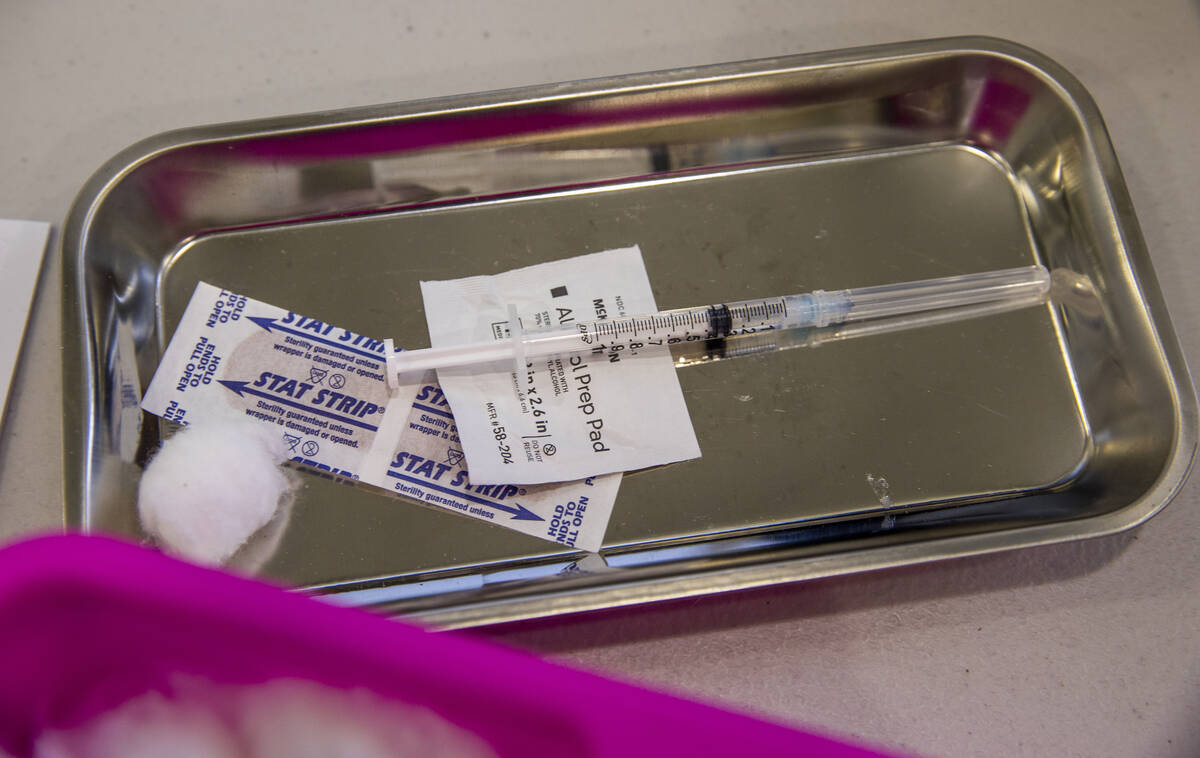The ‘real miracle’: Nevada’s roller-coaster rollout of COVID-19 vaccine
Over the past year, 1.6 million Nevadans — or about half of the state’s population — have been inoculated against COVID-19 in a roller-coaster rollout of the vaccine.
The massive rollout, which began Dec. 14 last year, was first characterized by scarce supply and high demand, glitchy appointment systems and “line-jumping.” Within a few months, however, it had morphed into a well-oiled machine — one with abundant doses and too few takers.
To bolster uptake, public health agencies partnered with everyone from casinos to churches to stadiums to host shot clinics where residents work, worship and play. They zeroed in on communities of color with low vaccination rates. To give an extra nudge, the state held a raffle for the vaccinated with a grand prize of $1 million.
Developing vaccine using a novel technology in less than a year was unprecedented, but “the real miracle is rolling it out within months,” said UNLV ethicist Johan Bester.
“We should give kudos and congratulations to our public health authorities,” said Bester, director of bioethics at the Kirk Kerkorian School of Medicine.
Still, the rollout has not been an unqualified public health success. Some, including Bester, believe that officials failed to tackle early on the distrust some have for the vaccine.
Karissa Loper, who directs the state’s vaccination effort, agrees an opportunity was missed to communicate early and clearly about how a safe vaccine could be developed in record time.
“Our inability to really explain the process to folks at different education levels was a failure at all levels of government,” and remains a key reason why people refuse to get vaccinated, said Loper, a bureau chief with the Nevada Department of Health and Human Services.
Early challenges
The failure to communicate how development of messenger RNA vaccines built upon two decades of research and how the U.S. government subsidized billions of dollars in costs for pharmaceutical companies, allowing them to go full steam ahead, was the low point of the rollout for Loper.
The high point was the thrill of delivering the state’s first vaccine shipment, when members of the health department’s small vaccination team drove doses to all corners of the state, going “truly above and beyond” to ensure health care workers could be protected against the new coronavirus.
The team faced numerous logistical challenges. The sensitive vaccine had rigorous storage and handling requirements. Planning was complicated by a lack of certainty about how many doses the state would receive weekly from the federal government. At first, the feds were using outdated population data for its distribution formula, which meant that fast-growing states such as Nevada got short-changed.
Health care workers were first in line for vaccine followed by first-responders, many of whom got their doses at their workplaces. Doses also were prioritized for vulnerable residents of nursing homes.
Meanwhile, older residents clamored for the vaccine and complained of spotty communication from public health agencies. In mid-January, when eligibility for vaccine was extended to all people 70 and older, technology issues further complicated logistics.
The Southern Nevada Health District had not previously used an appointment system for administering vaccines for flu and other diseases, instead giving doses on a walk-in basis, said chief administrative nurse JoAnn Rupiper. The appointment system the district first launched for COVID-19 vaccinations was glitchy, informing users in January that appointments weren’t available until August.
Elderly citizens lamented spending hours at all times of day and night in often failed attempts to book appointments. And those were ones who had access to a computer and knew how to use it.
Bester, the UNLV ethicist, worried at the time about “the 70-year-old senior citizen, alone at home with nobody to help him work the computer, who doesn’t know where to go.”
Within weeks, the state opened a call center and launched a hotline to assist with scheduling appointments. It also helped the health district put a functional appointment system in place.
For Rupiper, a turning point to smoother operations came in late January, when the district called upon Clark County emergency management and fire departments for ongoing help, adding needed skills and resources to the local effort.
“They were able to work with the state to get us the resources we needed, the manpower” for the complex and challenging rollout, Rupiper said. The resources included members of the Nevada National Guard, and volunteers from the U.S. Department of Agriculture and the Federal Emergency Management Agency. Veterinarians from the agriculture department administered shots at vaccination sites, where members of the guard directed the flow of shot-seekers.
This manpower would be needed to handle the huge demand from the public for the vaccine after Clark County opened its first mass vaccination site, at Cashman Center in downtown Las Vegas.
The push to quickly vaccinate long lines of people at first resulted in little checking to ensure individuals had appointments or were even eligible for a shot. County officials pledged to do better.
Playbook gives way to ‘line-jumping’
A nearly 100-page vaccine distribution playbook — drafted by the state based on guidance from the federal government — described who would have early access to the vaccines, and in what order.
The playbook prioritized senior citizens and frontline essential workers according to the necessity of their skills. But interpretation of the playbook was left to each county.
In Clark County, a loose interpretation left older residents wondering why young government workers were prioritized ahead of them.
Shirley Brice, a 66-year-old Henderson woman with heart conditions, said she took no issue with medical workers being at the front of the line.
“But it seems like it’s gotten … a bit out of control,” Brice said in mid-February, when Nevada remained among the roughly one-third of states that had not extended eligibility to those 65 and older.
By then, thousands of local government workers in Southern Nevada, including young and and healthy employees working remotely, had received COVID-19 vaccines.
Gov. Steve Sisolak told the Review-Journal he took “great exception” to “line-jumping” by city and county government employees, who should not yet have been eligible under the state playbook.
The din died down as Clark County quickly moved through the prioritization tiers, opening up eligibility to those 65 and older on Feb. 18, and then in March to hospitality and food service workers. The casino industry embraced the vaccination campaign, with many hosting clinics for their workers.
Soon to follow were those 55 and older with underlying health conditions. In early April, anyone 16 and older was eligible for vaccination in Clark County.
Shift to community initiatives
With demand for vaccine waning, the emphasis of the rollout moved from large vaccination sites to smaller clinics at churches, schools and community centers.
The public-private Nevada Vaccine Equity Collaborative, led by nonprofit Immunize Nevada and the Nevada Minority Health and Equity Coalition, formed to better ensure outreach to all communities.
“We really wanted to work with all of the trusted partners across Nevada, nonprofits and other community-based organizations that people know and love — their church, their senior center, their volunteer group,” Loper said. “We wanted to make sure those folks … had accurate, up-to-date clinical information about the vaccines, about how they had been developed, so that they can then share that” to build vaccine confidence across the state.
In July, Sisolak asked the federal government for help from FEMA “surge teams” to improve vaccination rates in Clark County.
This effort, dubbed Get Out the Vax, targeted ZIP codes with low vaccination rates and high rates of infection for door-to-door outreach, including distributing information on the vaccine and nearby clinics. One targeted North Las Vegas ZIP code saw first doses increase by 21 percent.
Vaccination rates among minorities in Clark County also increased. In late March, 13 percent of white residents had been vaccinated, compared with 7 percent of Blacks and 6 percent of Hispanics, according to health district data. Today, 37 percent of whites are vaccinated, 35 percent of Blacks and 46 percent of Hispanics. Asian Pacific Islanders have the highest rate, at 55 percent.
Rupiper said it was validating to witness the emotional response of some residents getting their first shot. “That was such a relief for them,” she said.
Fun and games
Officials also aimed to make vaccination fun. They hosted pop-up clinics at unusual spots, such as the iconic Welcome to Fabulous Las Vegas sign, Allegiant Stadium and even a strip club.
They offered incentives to get a jab, launching in June the Nevada Vax Days raffle, eight weeks of weekly drawings that included a $1 million grand prize. Stagnating vaccination numbers in the state saw a boost of nearly 441,000 doses administered.
While these efforts appealed to the vaccine indifferent, they likely didn’t change the minds of those with a keen distrust of the shots.
Trust — and not just of vaccine — is at a low point in our society, Bester said. For some people, distrust of the vaccine is part of a larger issue. “They don’t trust public health agencies. They don’t trust the government. They don’t trust their fellow citizens. They don’t trust the vaccines,” he said, adding that the distrust was worsened by the politicization of the vaccine.
For this group, “Any messaging that they get about vaccine safety actually makes them more reluctant to vaccinate,” he said. “They get more entrenched in their anti-vaccine stance the more you challenge them.”
Still, some may be willing to place their trust in a higher power — like the Las Vegas Raiders. The endorsement of the vaccine by the Raiders organization and the requirement that fans going to games at Allegiant Stadium be vaccinated is a “promising direction” for vaccination efforts, he said.
Full-throttled vaccination endorsements by trusted entities — athletes, entertainers, Apple — also could help to ease the distrust, he suggested. So could one-on-one conversations with a relative, friend or neighbor.
Higher levels of distrust in government, which typify the Mountain West, are reflected in lower vaccination rates in the region compared to many other parts of the country, Bester noted.
According to the Centers for Disease Control and Prevention, Nevada ranks 33rd among states for percentage of its population fully vaccinated against COVID-19, and 40th for booster shots. That might be considered a public health win for a state that consistently ranks at or near the bottom for flu vaccination.
Running out of tricks
As the vaccination rollout enters its second year, state and local officials say they have no new tricks up their sleeves to get more hold-out Nevadans vaccinated.
Their immediate focus is on giving booster shots as well as providing first doses to newly eligible populations. Children as young as 5 are now approved for vaccine, and even younger children are expected to become eligible next year.
Meanwhile, more than 8,100 Nevadans have died of COVID-19, a discouraging statistic for vaccination officials like Shannon Bennett, the state’s immunization program manager.
“It’s hard to watch Nevadans choose not be vaccinated when the vaccine has been proven safe and effective, and to continue to see those hospitalization numbers and the deaths that do occur specifically in the unvaccinated population,” she said.
Contact Mary Hynes at mhynes@reviewjournal.com or 702-383-0336. Follow @MaryHynes1 on Twitter.
Dollars for doses
The Nevada State Immunization Program has received more than $72 million in federal funding to support the state's COVID-19 vaccine response efforts. Prior to the pandemic, the program was federally funded at $3.5 million, according to Nevada Department of Health and Human Services representative Shannon Litz.
"Additionally, the program has worked with the (state) Office of Public Health Investigations and Epidemiology (OPHIE) to fund an additional $20 million in activities," Litz said in an email.
— Mary Hynes



